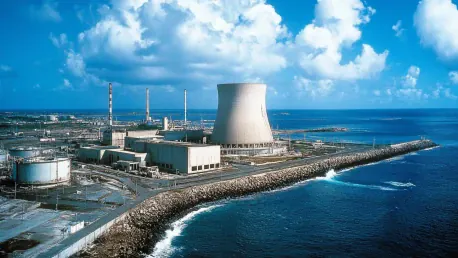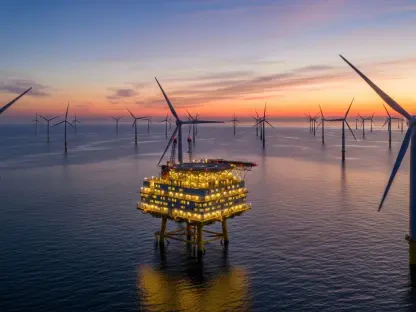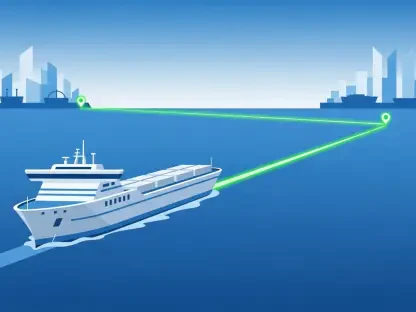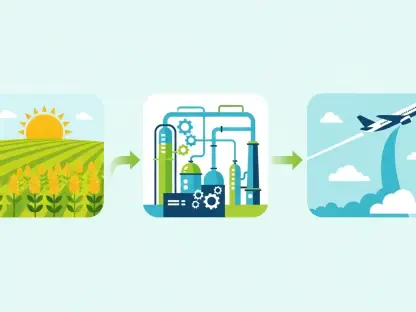The demand for clean and resilient energy is rising across sectors, prompting a revolutionary approach to nuclear power expansion spearheaded by major corporations. This article explores the ambitious pledge by a coalition of large energy users dedicated to tripling global nuclear capacity by 2050, a critical move for achieving net-zero emissions and enhancing energy security.
The Large Energy Users Pledge
Major Corporations Join Forces
A coalition of influential companies unveiled the Large Energy Users Pledge during CERAWeek. Prominent firms like Google, Amazon, Meta, and key industrial players including Dow and Occidental, committed to significantly boosting nuclear power capacity as a cornerstone of sustainable operations. This marks a pioneering moment where major energy users outside the nuclear sector have demonstrated unified support for an extensive expansion of nuclear energy. The World Nuclear Association (WNA) spearheaded this initiative under the Net Zero Nuclear initiative, intending to promote nuclear power as an essential solution for achieving net-zero emissions.
The commitment from these corporations highlights the seriousness with which they view nuclear energy’s potential to meet growing energy demands. By endorsing nuclear power, these companies are acknowledging its role in maintaining energy security, resiliency, and providing a stable supply of clean power. As businesses increasingly rely on uninterrupted and dependable energy sources, the shift toward nuclear energy represents a strategic move aligned with long-term sustainability goals. This high-level involvement from private sector giants is anticipated to mobilize significant capital and foster progress within the nuclear industry.
Industrial Commitment
These corporations recognize nuclear energy’s potential in sustaining high-temperature industrial processes, hydrogen production, and synthetic fuel manufacturing. Their unified support signifies a major shift towards embracing nuclear power as a reliable and clean energy source. With the escalating necessity for reliable electricity in various operations, corporations are urged to explore alternative energy solutions capable of ensuring long-term, cost-effective operations. Consequently, nuclear power is being positioned as a principal solution to address these challenges across multiple sectors.
The pledge places emphasis on creating equitable financial access for nuclear projects, ensuring that government-backed investments and broader corporate participation are harnessed to accelerate the nuclear sector’s expansion. The initiative underscores the need for a diversified energy strategy that integrates nuclear capacity as a viable component for countries and corporations striving toward a cleaner future. By advocating for government-backed investments and emphasizing the importance of equitable financing, signatories aim to break down barriers preventing broader nuclear adoption, aligning interests between public and private sectors.
Financial and Governmental Support
Necessity for Investment
Equitable financial access for nuclear projects is imperative. The pledge emphasizes the need for government-backed investments and broader corporate involvement, ensuring robust financial signals to drive expansive nuclear deployment. Despite gaining policy momentum in recent years, the nuclear sector continues to face significant challenges including high capital costs, regulatory hurdles, and financing issues. Building a strong foundation for nuclear deployment necessitates not only financial support but also policy measures that facilitate smoother operational processes and regulatory coherence.
Experts suggest that scaling nuclear deployment to even double current capacity will demand substantial investment signals and supportive policy frameworks. Projections by the International Atomic Energy Agency (IAEA) indicate that nuclear capacity could reach between 458 GWe and 890 GW by 2050, depending on market and policy conditions and investment in new and existing reactors. This underlines the critical importance of consistent investment and implementation of policies conducive to nuclear growth, which can support pathways for achieving these ambitious capacity goals.
Policy and Regulatory Frameworks
Despite gaining policy momentum, the nuclear sector still faces challenges like high capital costs and regulatory hurdles. Industry experts advocate for supportive policy frameworks to facilitate doubling nuclear capacity by mid-century. Addressing these regulatory challenges requires an orchestrated approach by policymakers who can create conducive environments for project approvals and operational consistency. Simplifying regulatory processes and creating predictable frameworks can significantly reduce uncertainties and encourage private sector engagement.
Moreover, the intricate nature of nuclear projects calls for innovative financing mechanisms that mitigate risks associated with high upfront costs. With substantial backing from leading financial institutions, the pledge aims to harness capital resources required for large-scale nuclear projects. These efforts are complemented by governmental strategies focusing on resilient supply chains and groundbreaking technologies like small modular reactors (SMRs) and advanced reactors, which promise to transform the nuclear landscape by offering flexibility and cost-effectiveness.
Mobilizing Global Support
Diverse Industry Participation
The initial signatories, including offshore engineering firms and multinational corporations, represent a diverse array of industries. This global interest demonstrates the widespread recognition of nuclear power’s strategic importance. The inclusion of companies like Allseas, IHI Corporation, and ORLEN Synthos Green Energy (OSGE), which are not traditionally associated with nuclear energy, underscores the expanding appeal and perceived necessity of a robust nuclear sector. These initial backers indicate that there is a broader consensus forming around the benefits and future potential of nuclear energy.
The pledge’s timing amidst rising demand for firm, carbon-free power driven by factors such as electrification, AI-driven data center expansion, and industrial decarbonization efforts, further aligns it with global sustainability goals. As sectors like maritime, aviation, and oil & gas increasingly look toward greener alternatives, the involvement of diverse industry players reflects the growing recognition of nuclear power’s strategic importance across a variety of critical applications. This interest signals an expanding coalition potentially including more sectors in the future.
Expanding the Coalition
The pledge is expected to attract additional support from various sectors such as maritime, aviation, and oil & gas, showcasing a growing collective effort toward embracing nuclear energy as a key component of a diversified power strategy. As awareness of nuclear power’s capabilities broadens, the inclusion of new signatories across different industries will likely lead to consolidated efforts that support resilient supply chains, innovative technologies, and collaborative financing strategies. These collaborative measures are vital in ensuring comprehensive support for nuclear projects, leading to streamlined implementation and accelerated progress.
A notable aspect of the pledge is its alignment with the broader effort to encourage sustainable practices and decarbonization across climate-critical sectors. By positioning nuclear energy as a viable, indispensable part of a comprehensive energy solution, the initiative aims to draw in more stakeholders and galvanize action toward a sustainable, resilient energy future. With increased corporate participation, the nuclear energy sector stands to benefit from the combined expertise, financial backing, and technological innovation of a wide array of industry leaders.
Strategic Goals and Projections
Ambitious Capacity Goals
The pledge aims to elevate current global nuclear capacity from 377 GW to 1,131 GW by 2050. Achieving this goal requires coordinated efforts from the private and public sectors, bolstered by innovative financing mechanisms. Such a significant expansion necessitates not only capital investment but also advancements in technology, streamlined regulatory approvals, and strategic international collaborations. The aim is not solely to increase capacity but also to ensure that new and existing reactors operate efficiently and safely within robust frameworks that support sustainability goals.
Projections by the IAEA underscore this target by highlighting that nuclear capacity could reach between 458 GWe and 890 GW by 2050, contingent on supportive market and policy environments. Doubling or potentially tripling nuclear capacity underscores the transformative potential of nuclear energy in the global decarbonization effort. Coordinated efforts will be essential in mobilizing both private-sector resources and government policies to meet these ambitious targets.
Global Collaborative Efforts
The International Atomic Energy Agency (IAEA) projects nuclear capacity could reach between 458 GWe and 890 GW by 2050. This potential growth highlights the critical need for continued investment in both new and existing reactors. The collaborative effort between various stakeholders, including public administration, private corporations, and international agencies, serves as a crucial driving force to achieving these capacity goals. The collective commitment to scaling nuclear capacity is expected to galvanize significant global momentum toward sustainable energy practices.
The increased focus and investment in small modular reactors (SMRs) and advanced nuclear technologies are critical to this expansion strategy. These technologies offer potential solutions to some of the challenges associated with traditional nuclear plants, such as high capital costs and extended construction timelines. By diversifying nuclear technology applications and ensuring flexibility in deployment, these innovations are positioned to play a pivotal role in achieving the ambitious capacity targets outlined in the pledge.
Aligning National Endeavors
Government Commitments
Countries endorsing the Declaration to Triple Nuclear Energy have committed to safe nuclear operations and innovative financing mechanisms. Nations like the U.S., UK, and Canada are mobilizing substantial funds to enhance enriched uranium production capacities. This international support resonates with the objectives of the Large Energy Users Pledge, reflecting a unified vision for expanding nuclear capacity. The governments’ commitment to joint financing and technological advancements bolster the nuclear sector by ensuring continuous support and collaborative development across borders.
Under the Biden administration, the U.S. set ambitious targets in November 2024 to add 35 GW of new nuclear capacity by 2035 and maintain an annual pace of adding 15 GW by 2040. Alongside other key nations, the U.S. committed significant capital to boost enriched uranium production capacity independent of Russian materials, thereby establishing a resilient uranium supply chain. Such national endeavors align with global efforts, reiterating the importance of secure and reliable nuclear infrastructure devoid of external geopolitical influences.
Shifting Strategic Focus
The U.S. Energy Secretary underscores an era of American nuclear innovation, emphasizing energy security, affordability, and industrial revitalization. This strategic focus aims to bolster both fission and fusion technologies. Moving away from an exclusive focus on climate change, this approach underscores the multifaceted benefits of nuclear power, including its role in ensuring energy security, fostering affordable energy solutions, and catalyzing industrial advancements. By promoting innovation within the nuclear sector, the U.S. seeks to enhance its competitiveness and leadership in global energy markets.
The increased focus on incorporating advanced nuclear technologies underlines a broader strategy of ensuring that the energy transition is both economically viable and environmentally sustainable. The potential for nuclear technology to provide reliable and consistent power generation capabilities supports industrial growth while reinforcing the twin goals of reducing carbon emissions and enhancing energy security. This shift highlights a balanced strategy, seamlessly integrating economic, environmental, and security considerations.
Launch Ceremony Insights
As the demand for clean and resilient energy surges across various sectors, a revolutionary approach to expanding nuclear power is being led by major corporations. This article delves into the ambitious commitment made by a coalition of significant energy consumers, who are dedicated to tripling the global nuclear capacity by the year 2050. This proactive measure is crucial for achieving net-zero carbon emissions while also bolstering energy security. The coalition’s pledge highlights the growing recognition of nuclear energy’s vital role in meeting future energy needs sustainably. By significantly increasing nuclear capacity, these corporations aim to address the dual challenges of reducing greenhouse gas emissions and ensuring a stable, reliable power supply. As sectors globally push for cleaner energy solutions, this movement towards increasing nuclear power underscores the importance of innovation and collaboration in the pursuit of a sustainable energy future.









